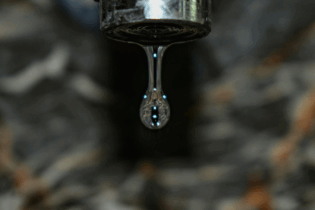The Southern African Vinyls Association (SAVA) announced Tuesday 9 July 2013 that it will be using its presence at this year’s annual Green Building Expo to promote and encourage the use of PVC in energy efficient buildings. The sixth annual Green Building Council SA Convention and Exhibition will be taking place at CTICC from 16-18 October 2013.
PVC was first produced in a laboratory in 1872. It began to be produced commercially in the 1930s, when techniques for mixing it with plasticizers became known and PVC emerged as a substitute for rubber. During World War II, German scientists developed PVC pipe for water supply systems when material shortages limited conventional pipe supplies. “Today, PVC is by far the most common plastic used in the building and construction industries and has a wide range of applications, ranging from use in pipes to wire sheathing, flooring and weather-stripping”, says SAVA Chief Executive Officer, Delanie Bezuidenhout. While some vinyl products such as siding and flooring have recently been criticized by builders or architects questioning the wisdom of specifying materials made from PVC, SAVA will be using this year’s GBCSA theme of “ReWire”, to set the record straight and assist these specifiers to make intelligent choices. “We want to change people’s negative perceptions about PVC by educating visitors to the convention and exhibition about the energy efficiency of vinyls in building and construction,” Delanie she says. PVC has been in wide scale use for more than 50 years. It meets international standards for safety and health for the applications for which it is used, as well as the SANS 10400 guidelines for energy efficient buildings as prescribed by the SABS.SAVA was recently instrumental in the Green Building Council of SA’s decision to withdraw the Mat-7 PVC Minimisation credit from the Green Star SA rating system which encouraged its replacement with an alternative product. According to Delanie, this was a major step forward in SAVA efforts to promote PVC as a responsible and sustainable material with wide areas of application.
“Our members have all voluntarily committed themselves to the industry’s Product Stewardship Programme (PSP), this forms the cornerstone of SAVA efforts as we aim to raise awareness of the good qualities of PVC by assisting its members, relevant authorities and experts to understand, characterize and address product stewardship issues association with the life cycle of PVC products,” she explains. The PSP consists of five fundamental key areas, namely:- The responsible and sustainable use of additives, including (but not limited to) stabilizers, plasticizers, pigments and Bisphenol A.
- The responsible and sustainable vinyl recycling program that quantifies the opportunity for recycling in post-production and post-consumer waste and sets realistic and sustainable goals.
- Open and effective communication with industry role players, the public and government in order to ensure that PVC is used effectively and cost effectively.
- Ensuring the industry’s health through product, market and application opportunities, thereby improving human capital and overall growth, prosperity and sustainability of the vinyl industry.
- Ensuring a fully functional industry initiative that adds value to both members and the industry by growing a sustainable membership base with an effective marketing plan.








